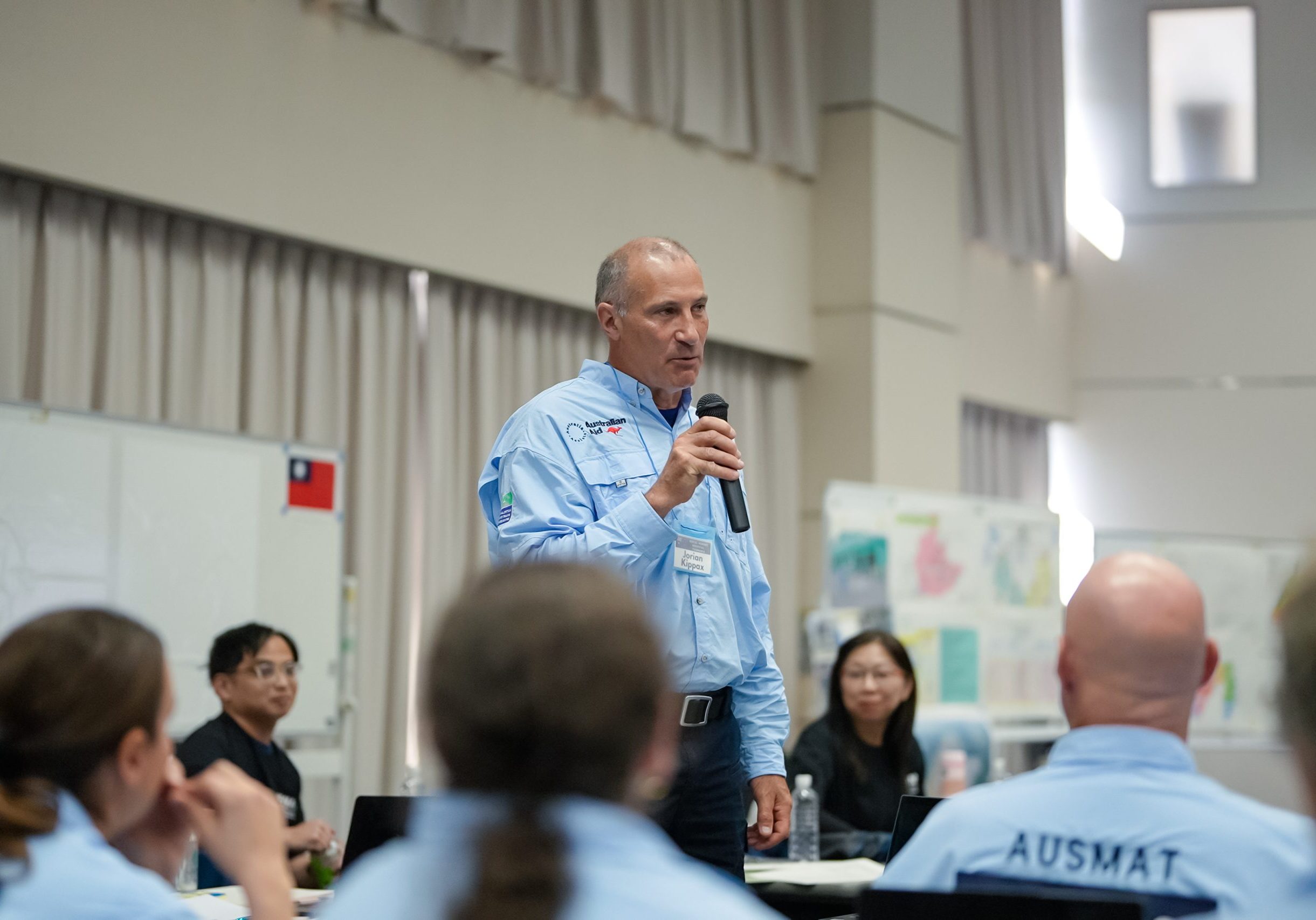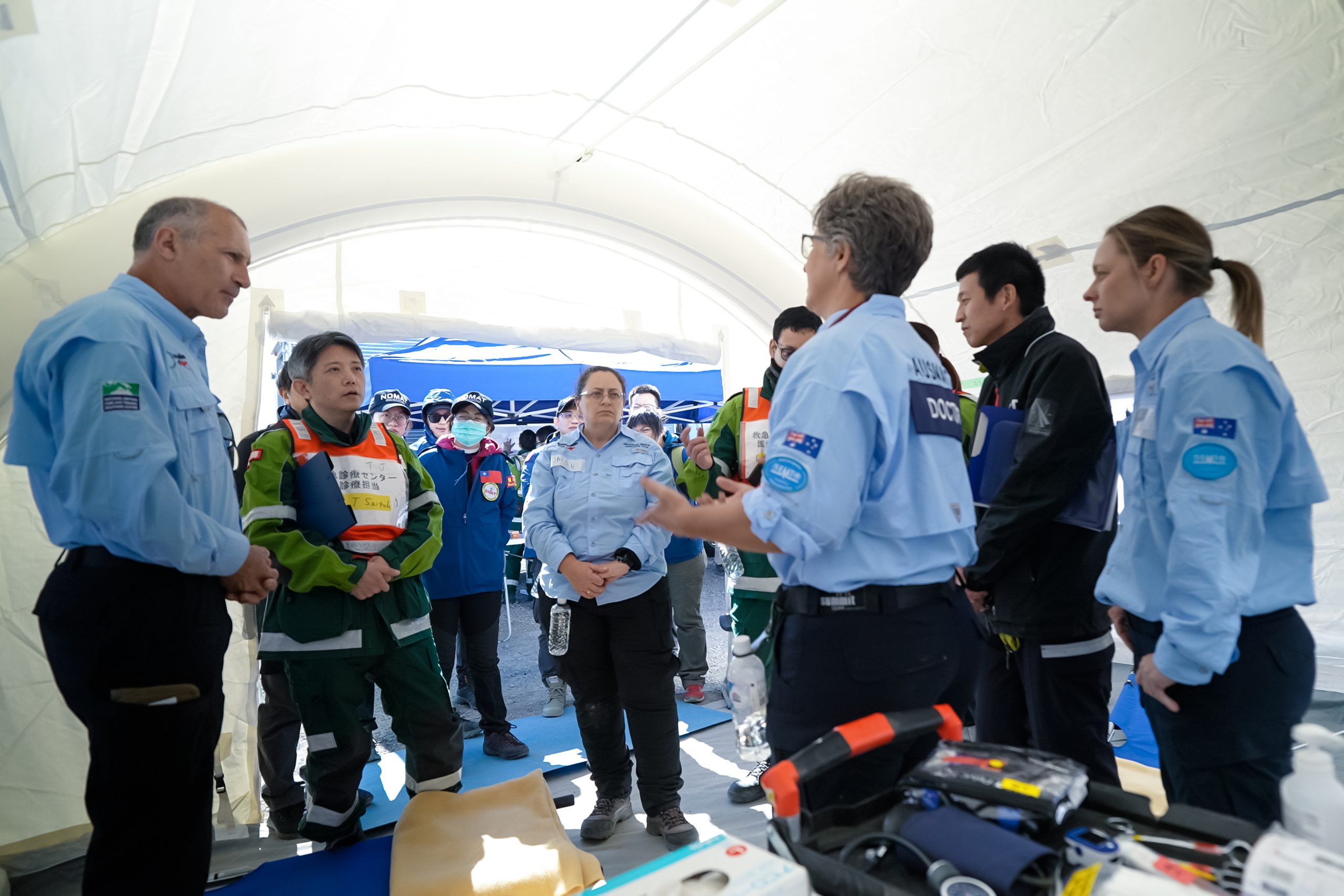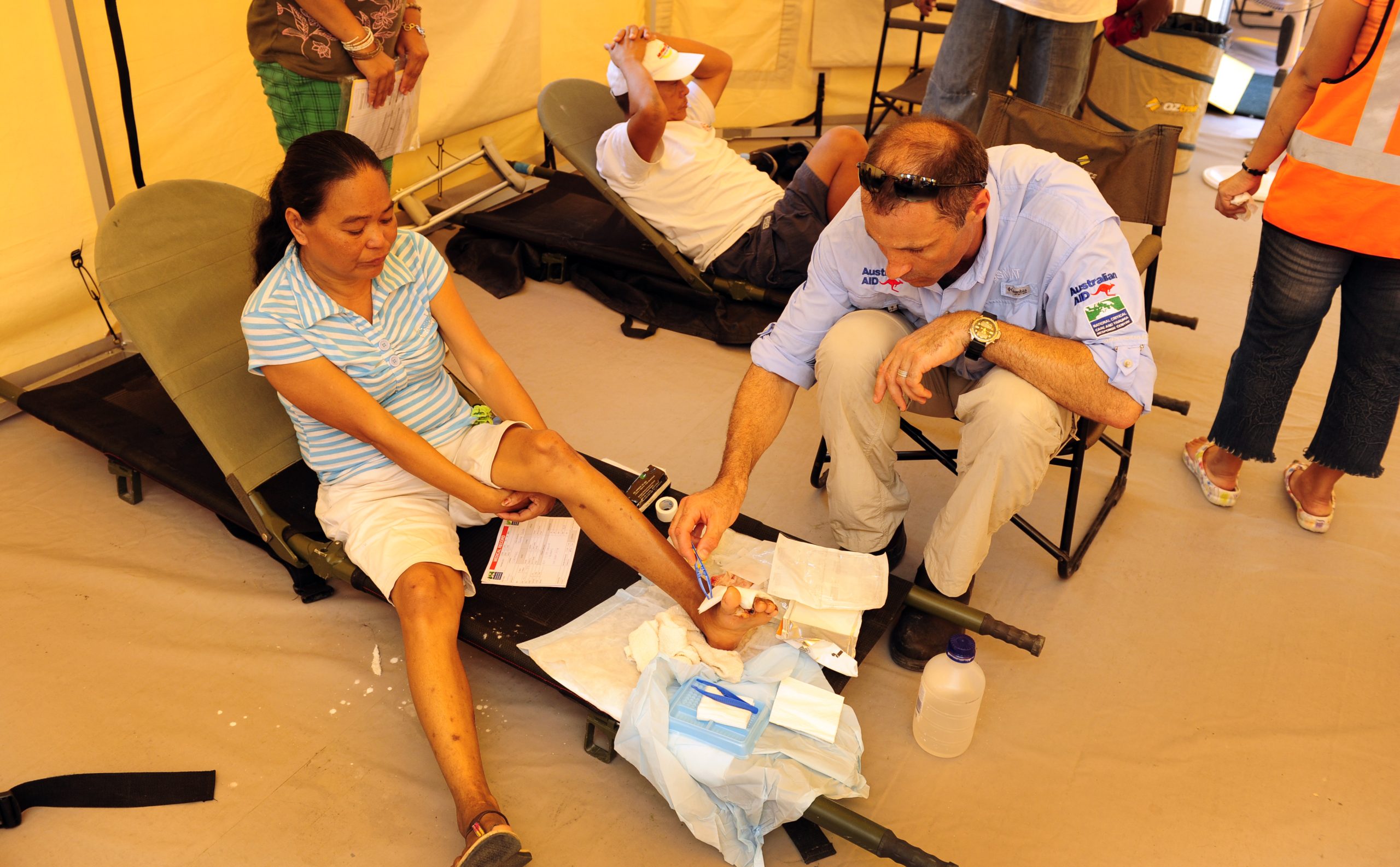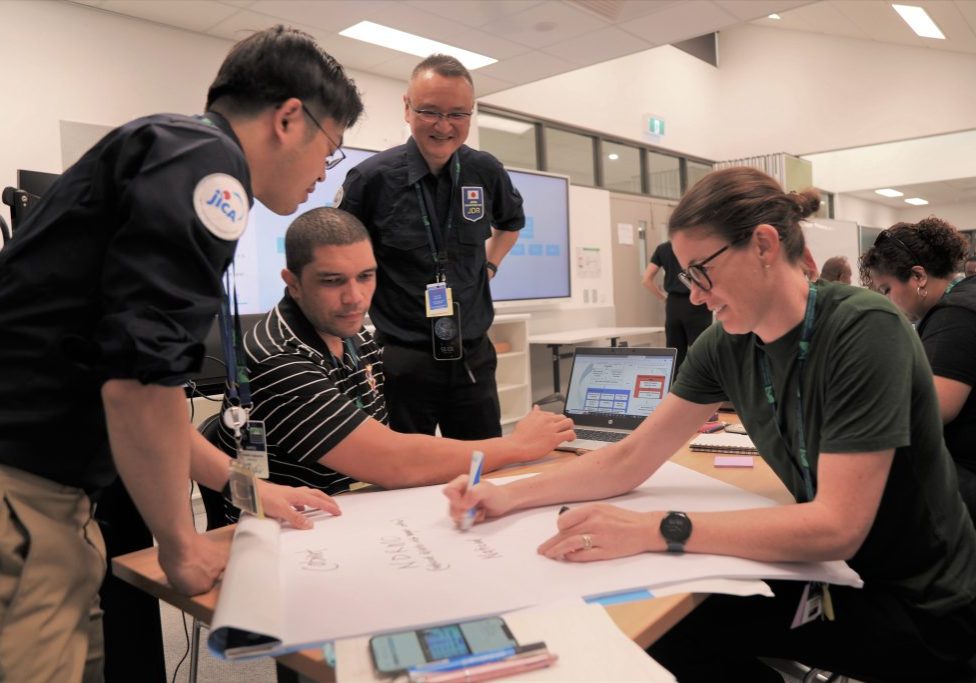AUSMAT spotlight on Dr Jo Kippax: from Tasmanian trauma care to global emergency responses
09 Jul 2025
Written by Erika Lu
Dr Jorian ‘Jo’ Kippax, an emergency medicine specialist based in Tasmania, has spent the past decade quietly shaping Australia’s disaster response efforts – both at home and abroad. Since joining the Australian Medical Assistance Team (AUSMAT) in 2013, Jo has brought his calm, adaptable approach and clinical expertise to some of the region’s most complex health emergencies, from Typhoon Haiyan in the Philippines in 2013 to the recent earthquake in Myanmar.
Working in Tasmania – a state defined by its vast distances, rugged terrain and remote communities – has helped prepare Jo for the unpredictable demands of international deployment. “I wear two main hats,” Jo explains. “One is with Ambulance Tasmania’s rescue helicopter service as a Retrievalist and Retrieval Coordinator, travelling to remote areas across the state. The other is as a Trauma Specialist at the Royal Hobart Hospital.” This dual role enables him to support patients from the scene through to hospital care.

This continuity of care, coupled with his broad scope of practice, made Jo a natural fit for AUSMAT, where agility, clinical leadership and strong interpersonal skills are essential.
Jo’s first deployment with AUSMAT came shortly after joining in 2013, in response to Typhoon Haiyan, one of the most powerful storms ever recorded. As the Clinical Lead for Team Bravo, he arrived in Tacloban during the early recovery phase. What followed, he says, was one of the most intense and rewarding experiences of his career.
“The key skill is not just clinical – it’s attitude,” says Jo. “You need pragmatism, humour, adaptability and the ability to put your ego aside for the good of the team and patients.”
“It was one of the most intense and rewarding experiences of my career. I witnessed incredible teamwork among AUSMAT members and the resilience of the Filipinos in Tacloban – an experience that stays with me,” he says.
He recalls a powerful moment involving a young child with a severe head injury. The only working CT scanner was aboard a Chinese hospital ship offshore. Within minutes AUSMAT has coordinated a multinational chain of support: military transport to a Korean team, transfer by the Philippine Navy, treatment by a Russian neurosurgeon, and return via the Japanese Air Force.
“What would usually take weeks happened in ten minutes because everyone just said, ‘Yes! When?’” Jo recalls.
We achieved incredible things not because it was easy, but because people had the will to make it happen.”
These moments of collaboration left a lasting impression. This swift multinational coordination exemplified Jo’s leadership and his ability to inspire collaboration across diverse teams under pressure. It was a powerful example of unity in diversity where nations, cultures, and professions worked seamlessly together in the face of crisis.
Most recently Jo was part of the AUSMAT Specialist Advisory Team deployed to Myanmar in March following a devastating 7.7 magnitude earthquake. The five-member team provided strategic health assessment and supported the Australian Government’s humanitarian response.
Jo also took part in an international earthquake response exercise in Japan, designed to strengthen AUSMAT’s disaster preparedness and cross-border coordination. “It was a fascinating experience,” he said. “These exercises reveal so much about how we can improve interoperability and logistics between countries.”



Beyond AUSMAT: teaching, Army, Antarctica, and search-and-rescue
Jo shares his expertise in intensive care paramedic at the University of Tasmania, where he teaches environmental medicine, trauma care and disaster response. He is also a Reservist Officer in the Australian Defence Force and has worked with the Australian Antarctic Division, fulfilling a lifelong dream.
“Technically, I’ve been to Antarctica - though it was just for about 16 minutes,” he laughs.
Jo also supports search-and-rescue operations with Tasmania Police, offering clinical advice and training for wilderness incidents – just another example of how his career spans the full spectrum of emergency medicine.
Whether coordinating high-stakes evacuations, mentoring emerging clinicians or supporting operations from the air, Jo brings a grounded, solutions-focused mindset to every challenge.
His career stands as a testament to collaborative leadership, adaptability and the belief that even in the darkest moments, teamwork and compassion can make a profound difference.
“What I’ve seen time and time again,” Jo says, “is that when people come together with a shared purpose, extraordinary things are possible.”












